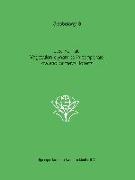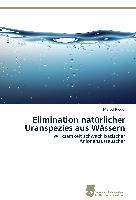- Start
- Vegetation Dynamics in Temperate Lowland Primeval Forests
Vegetation Dynamics in Temperate Lowland Primeval Forests
Angebote / Angebote:
I. Aim and Premisses.- I.1. Introduction, aim and subject.- I.2. Theoretical basis.- 2.1. Ecosystem theory and Bia?owie?a Forest studies.- 2.2. Vegetation dynamics as an ecological process.- I.3. Study area. Methodical basis. Material.- 3.1. Object.- 3.2. Organisation and methods.- 3.3. Nomenclature, abbreviations.- II. The Area ¿ Basic Data about Bia?owie?a Forest.- II. 1. General features.- 1.1. The vegetation.- 1.2. Topography.- 1.3. Physico-geographical situation.- II.2. Biogeography.- II.3. History.- II.4. Climate.- II.5. Geology.- II.6. Terrain formation and relief.- II.7. Hydrology.- III. Geobotany.- III.1. The flora.- 1.1. Statistics and general characteristic of the flora.- 1.2. Participation of trees, shrubs and undershrubs.- 1.3. Geographical characteristic of the flora.- 1.4. The flora of the Bia?owie?a Forest against the background of that of the adjacent areas.- III.2. Forest building trees and tree stands.- 2.1. Habit, age and dimensions of Bia?owie?a Forest trees.- 2.2. Review of tree species.- 2.2.1.The spruce (Picea abies).- 2.2.2. Scotch pine (Pinus sylvestris).- 2.2.3. The fir (Abies alba) and the yew (Taxus baccata).- 2.2.4. Oaks (Quercus petraea and Quercus robur).- 2.2.5. The linden (Tilia cordata), maple (Acer platanoides) and hornbeam (Carpinus betulus).- 2.2.6. The elms (Ulmus glabra, U. minor, U. laevis).- 2.2.7. The ash (Fraxinus excelsior) and alder (Alnus glutinosa).- 2.2.8. The aspen (Populus tremula) and birches (Betula pendula, B. pubescens, B. carpatica).- 2.2.9. The willows (Salix sp. div.).- 2.3. Structure of the forest stands.- 2.4. Age and origin of forest stands.- 2.5. Stand growth increment.- 2.6. Popular names of the forest types.- III.3. Forest vegetation.- 3.1. Deciduous forests (class: Querco-Fagetea).- 3.1.1. General characteristics.- 3.1.2. Mesophilous deciduous oak-linden-hornbeam forest (Tilio-Carpinetum).- 3.1.3. Streamside alder-ash forest (Circaeo-Alnetum) and riverside ash-elm forest (Ficario-Ulmetum).- 3.1.4. Thermophilous oak forest (Potentillo albae-Quercetum).- 3.2. Coniferous forests (class: Vaccinio Piceetea).- 3.2.1. General characteristics.- 3.2.2. Meso-oligotrophic mixed forest (Pino-Quercetum).- 3.2.3. Spruce forest (Querco-Piceetum and Sphagno-Piceetum).- 3.2.4. Fresh pine forest (Peucedano-Pinetum) and other pine forests on mineral habitats.- 3.2.5. Bog pine forest (Vaccinio uliginosi-Pinetum) and forest raised bog (Sphagnetum medio-rubelli pinetosum).- 3.3. Bog forest and bush (class: Alnetea glutinosae).- 3.3.1. General characteristics.- 3.3.2. Black alder bog forest (Carici elongatae-Alnetum).- 3.3.3. Willow bog bush (Salicetum pentandro-cinereae).- 3.3.4. Low birch bush (Salici-Betuletum humilis).- 3.3.5. Bog oak forest (Carici elongatae-Quercetum).- 3.4. Flood-plain alluvial willow forests and bush (class: Salicetea purpureae).- III.4. Natural and anthropogenic non-forest vegetation.- 4.1. General remarks.- 4.2. Water plant communities (Lemnetea, Potametea).- 4.3. Ephemeral silt communities (Bidention, Chenopodion fluviatile, Nanocyperion).- 4.4. Forest edge herbaceous communities (Alliarion, Geranion sanguinei).- 4.5. Reed swamp communities (Phragmitetea).- 4.6. Communities of meadows and pastures.- 4.7. Clearing communities.- 4.8. Plant communities of forest roads (Plantaginetea).- 4.9. Trampling-resistant communities from dirt roads, squares and yards in settlements (Plantaginetea).- 4.10. Ruderal communities along railway tracks (Sisymbrion, Onopordion).- 4.11. Ruderal communities in settlements (Eu-Arction, Sisymbrion, Onopordion).- 4.12. Weed communities in garden and field crops.- 4.13.Pioneering vegetation in artificial pits.- IV. Major Natural Factors Differentiating the Forest Environment and Landscape.- IV.1. General introduction.- IV.2. Soils in relation to forest vegetation differentiation.- 2.1. Soil-forming factors.- 2.2. Soil water types and the water balance.- 2.3. Morphological-genetic soil types.- 2.4. Relation between soil type and the vegetation.- IV.3. Ground frost and snow cover as ecoclimatic factors.- 3.1. Introduction. Material.- 3.2. Spring and autumn ground frost.- 3.3. The snow cover.- 3.4. The nature of ground freezing.- 3.5. Modifications of forest vegetation under the influence of some ecoclimatic factors.- IV.4. The transition zone (ecotone) and its synchorological and syndynamic aspects.- 4.1. Introduction.- 4.2. Methodical basis.- 4.3. Frequency of contacts between forest communities.- 4.4. Width of the transition zone and sharp outline of boundaries.- 4.5. Nature of floristic-phytosociological changes in the transition zone.- 4.6. Factors associated with spatial vegetation changes.- 4.7. Seasonal vegetation dynamics in the transition zone.- 4.8. Recapitulation.- IV.5. Uprooting of trees (tree saltation).- 5.1. Introduction.- 5.2. Characteristic of the phenomenon.- 5.3. Balance of wood volume from windfall and snag.- 5.4. Problems of permanence of tree stands.- 5.5. Windfall and deadfall as factors in the transformation of the forest biotope.- 5.6. Uprooting of trees as a factor initiating succession towards bog ecosystems.- 5.7. Uprooting of trees as a factor shaping the edges of raised bog.- 5.8. Recapitulation.- IV.6. Impact of herbivorous animals on vegetation structure and dynamics.- 6.1. Introduction.- 6.2. Herbivorous mammal species and their influence on vegetation.- 6.2.1. Historical data.- 6.2.2. The European bison (Bison bonasus).- 6.2.3. Red deer (Cervus elaphus) and roedeer (Capreolus capreolus).- 6.2.4. The wild boar (Sus scrofa).- 6.2.5. Rodents (Rodentia).- 6.3. Discussion: Selected aspects of the impact of herbivores on the vegetation.- 6.3.1. Seasonal variability of the activity of herbivores.- 6.3.2. Influence of browsing on the habitus of woody species.- 6.3.3. Influence of extent and way of woody food obtention on the structure and dynamics of the vegetation.- 6.3.4. Food preferences of herbivorous animals and the stability of the species composition and structure of the phytocenosis.- 6.4. Conclusions.- V. Fluctuatuation, Regeneration and Succession in Forest Communities under Natural Conditions.- V.1. General introduction.- V.2. Regression of thermophilous oak forest.- 2.1. Introduction.- 2.2. Methods.- 2.3. Comparison of the stand structures.- 2.4. Changes of the species composition and the distribution of plants.- 2.5. Invasion of hornbeam and hornbeam forest species.- 2.6. Age of the regression process.- 2.7. Causes and course of regression.- 2.8. Genesis of thermophilous oak forest and the nature of its contemporary transformations.- V.3. Field layer regeneration in pine forest (Peucedano-Pinetum) after ground fire.- V.4. Tree stand dynamics in Pino-Quercetum and Tilio-Carpinetum communities.- 4.1. Methods.- 4.2. Species composition of the tree stand in the Pino-Quercetum and the Tilio-Carpinetum and its changes in the period 1936¿1969.- 4.3. Influence of self-thinning processes and growing of trees on the specific composition and d.b.h. basal area in the stands.- 4.4. Changes in the layered structure.- 4.5. Natural regeneration.- 4.5.1. Production of tree diaspores.- 4.5.2. Extent of selfseeding.- 4.5.3. Durability of the snow cover as a factor influencing the abundance of seedlings.- 4.5.4. Relation between natural regeneration and the composition of the parent stand.- 4.5.5. Relation between natural regeneration and the situation of the parent trees. Influence of light conditions on the forest floor.- 4.6. Discussion.- 4.6.1. Influence of regeneration on the spatial structure of the stand.- 4.6.2. Tendency in the development of stands.- V.5. Permanence of species composition and repeatability of seasonal rhythms in a many-years cycle as indicator of stability (homeostasis) of forest communities.- 5.1. Methods.- 5.2. The original situation.- 5.3. Changes in the number of species in the herb layer.- 5.4. Permanence of the species composition.- 5.5. Number of species reaching the reproduction phase in the communities considered.- 5.6. Frequency of generative reproduction and behaviour of species in time.- 5.7. Repeatability of seasonal rhythms.- 5.8. Recapitulation.- V.6. Changes in the species composition and structure of the main forest and brush communities.- 6.1. Methodical remarks.- 6.2. Circaeo-Alnetum.- 6.3. Carici elongatae-Alnetum.- 6.4. Salicetum pentandro-cinereae.- 6.5. Querco-Piceetum.- 6.6. Pino-Quercetum.- 6.7. Peucedano-Pinetum.- 6.8. Sphagnetum medio-rubelli and Vaccinio uliginosi-Pinetum.- V.7. State and dynamic tendencies of forest communities.- 7.1. Prevailing processes and state of forest communities.- 7.2. Spatial picture of dynamic tendencies in forest communities in a landscape dominated by forest of primary origin.- VI. Seasonal Dynamics of Forest Communities.- VI.1. Introduction.- VI.2. Phenological characteristics of forest and brush communities.- 2.1. Sphagnetum medio-rubelli pinetosum.- 2.2. Vaccinio uliginosi-Pinetum.- 2.3. Querco-Piceetum.- 2.4. Peucedano-Pinetum.- 2.5. Pino-Quercetum.- 2.6. Tilio-Carpinetum typicum.- 2.7. Tilio-Carpinetum stachyetosum.- 2.8. Circaeo-Alnetum.- 2.9. Carici elongatae-Alnetum.- 2.10. Salicetum pentandro-cinereae.- VI.3. Synphenological analysis.- 3.1. Seasonal rhythm of flowering and fruiting.- 3.1.1. Flowering rhythm.- 3.1.2. Fruiting rhythm.- 3.1.3. Phenological similarity between the forest communities ¿ Interpretation of similarity dendrites.- 3.2. Analysis of synthetic phenological spectra.- 3.2.1. Basis for analysis.- 3.2.2. The vegetation period.- 3.2.3. Differences in the degree of intensity of herb layer communities development.- 3.2.4. Seasonal herb layer development ¿ maxima and minima.- 3.3. Seasonal colour variation in forest communities.- 3.3.1. Colour aspects.- 3.3.2. Flower colour analysis.- 3.3.3. Seasonal rhythms of flowering of forest communities herb layer and colour aspects.- 3.3.4. Seasonal variability of herb layer colours.- VI.4. Floristic-ecological analysis of seasonal dynamics of forest communities.- 4.1. Phenological plasticity of herb layer species and the ecological-phytosociological differentiation of forest communities.- 4.2. Correlation of seasonal rhythms of the herb layer with some selected ecological factors.- 4.3. Parallelism between phenological differentiation and floristic-ecological differentiation of forest communities.- VI.5. Phytophenological seasons in the forest communities of the Bia?owie?a Forest.- 5.1. Basis for distinguishing phenological seasons.- 5.2. Phytophenological seasons in forest and brush communities.- VII. Dynamics and Structure of Plant Populations in Forest Ecosystems.- VII.1. The notion of cenopopulations and the basis for their distinction.- VII.2. Phenological individuality of cenopopulations.- VII.3. Reproductive strategy of perennial herbaceous plant populations in forest ecosystems.- 3.1. Reproductive effectiveness.- 3.2. Generative and vegetative reproduction of herbaceous plant populations.- 3.2.1. Generative reproduction.- 3.2.2. Vegetative reproduction.- 3.3. Types of reproductive strategy in perennial herbaceous plant populations.- VII.4. Estimation of potential reproduction of forest phytocenoses.- 4.1. Total diaspore production.- 4.2. Variability in time and space of generative diaspore production.- 4.3. Phytosociological-ecological differentiation of the Tilio-Carpinetum and reproductive ptimum of some species populations.- VII.5. Plant populations in stabilised forest ecosystems.- VII.6. Plant populations in the ecotones between forest ecosystems.- 6.1. Ecotone and plant populations.- 6.2. Plant populations in various types of ecotones.- 6.2.1. Ecotone between ecosystems with similar ecological-phytosociological conditions.- 6.2.2. Ecotone between ecosystems with a high ecological-phytosociological diversity.- 6.2.3. Ecotone between ecosystems: forest ¿ meadow.- 6.3. Modification of populations in ecotones.- 6.3.1. Reproduction.- 6.3.2. Size and habit of plants.- 6.4. Types of contacts of the cenopopulations. The effect of contact.- VII.7. Population structure of forest communities.- 7.1. Spatial organisation of the herb layer.- 7.2. Population mechanisms responsible for the spatial structure of the herb layer.- 7.2.1. Age structure.- 7.2.2. Contiguity as effect of vegetative reproduction and development of polycorms.- VIII. Behaviour of Natural Forest under Man¿s Activity Synanthropisation of the Plant Cover.- VIII.1. Introduction. The notion of synanthropisation.- VIII.2. Factors of synanthropisation.- 2.1. Early mediaeval burying grounds with tumuli as an example of the selective influence of man in the distant past on forest ecosystems.- 2.1.1. Introduction.- 2.1.2. Distribution and size of burying grounds with tumuli.- 2.1.3. The occurence of burying grounds with tumuli and the natural differentiation of the forest vegetation.- 2.1.4. Differentiation of forest environment and ecological optimum for settlement.- 2.15. The tree saltation hypothesis concerning the establishment of burying grounds with tumuli.- 2.1.6. Recapitulation.- 2.2. Gathering.- 2.3. Trampling as the simplest and oldest anthropogenic factor influencing the vegetation.- 2.4. Roads as migration routes of synanthropic plants and as habitats of secondary anthropogenic plant communities.- 2.5. Primitive chemical wood industry as factor disturbing the forest stand structure.- 2.6. Colonisation and agriculture as main causes of the shrinking of the surface area of forest.- 2.7. Hunting and other forms of natural management.- 2.8. Forest management.- VIII.3. History of anthropogenic changes in the plant cover of the Bia?owie?a Primeval Forest.- 3.1. Sources and reconstruction method.- 3.2. Period 1: up to the 10th century.- 3.3. Period 2: from the end of the 10th century to the mid 16th century.- 3.4. Period 3: from the 16th century to 1888.- 3.5. Period 4: from 1888 to 1915.- 3.6. Period 5: from 1915 to 1930.- 3.7. Period 6: from 1930 to 1960.- 3.8. Period 7: from 1960 to the present.- VIII.4. Some selected phenomena.- 4.1. Neophytism in the plant cover of the Bia?owie?a Forest.- 4.1.1. Problem. Aim of study.- 4.1.2. Methods.- 4.1.3. Characteristics of neophytism in the Bia?owie?a Forest.- 4.1.4. The role of neophytes in the herb layer of forest communities and their effects on the other components.- 4.1.4.1. Results of comparative studies.- 4.1.4.2. Results of experimental studies.- 4.1.5. Discussion and recapitulation.- 4.2. Permanence of forest relicts in the agricultural landscape.- 4.3. Fate of forest species after permanent total annihilation of forest biocenoses.- 4.4. Syngenesis of scrub communities (order Prunetalia) on forest edges and along lanes in fields.- 4.5. Most recent transformations of anthropogenic vegetation.- VIII.5. Relations between anthropogenic vegetation and habitats of definite forest communities.- VIII.6. Changes in the abiotic environment.- VIII.7. Tentative balance and generalisation.- 7.1. Surface balance of deforestation consequences.- 7.2. Changes in the surface area of the main forest communities.- 7.3. Changes in the distribution of the flora and plant communities.- 7.4. Level of plant cover synanthropisation in the Bia?owie?a Forest.- 7.4.1. Synanthropisation as a phenomenon in time. Steps of synanthropisation.- 7.4.2. Distribution and range of synanthropisation processes in the Bia?owie?a Forest.- 7.5. Synanthropisation of the Bia?owie?a Forest and other larger forest areas in north-eastern Poland.- 7.6. Factors limiting synanthropisation of the Bia?owie?a Forest.- IX. Spontaneous Return of Forest onto Once Cleared Areas-Secondary Succession.- IX.1. Introduction.- IX.2. Examples of spontaneous changes in vegetation on anthropogenic terrain forms and secondary habitats.- 2.1. Development of Echio-Melilotetum on the surface of a railway embankment after interruption of weed control.- 2.2. Formation and regression of Leersio-Bidentetum on silt from the bottom of a water reservoir.- 2.3. Vegetation on charcoal piles.- IX.3. Secondary succession in a mesotrophic oak-linden-hornbeam forest habitat.- 3.1. Methods.- 3.2. Formal-statistical analysis and characteristic of the transformations.- 3.3. Floristic-structural analysis and characteristic of transformations.- 3.3.1. Participation of annual species.- 3.3.2. Participation of perennial species and the dominance structure.- 3.4. Appearance and participation of seedlings of woody species.- 3.5. Changes in the participation of native and foreign species during succession.- 3.6. Discussion and conclusions.- IX.4. Secondary succession in an oligotrophic pine forest habitat and the role of woody species.- 4.1. Introduction and methods.- 4.2. Course of secondary succession.- 4.3. Development of a Juniperus communis population.- 4.4. Participation and role of other dioecious species in the course of secondary succession in Peucedano-Pinetum habitats.- 4.5. Vegetation succession and development of juniper and aspen populations.- IX.5. Properties, role and origin of woody species participating in secondary succession in permanently deforested habitats.- 5.1. Properties of pioneer species.- 5.2. Changes of sex structure in populations of pioneer species. Tentative explanation of dioecism in the course of succession.- 5.3. Review of pioneer species.- 5.4. Effectiveness of seeding woody species on permanently deforested land.- 5.5. Origin of pioneer woody species.- IX.6. Time indispensable for recreation of the main types of forest ecosystems by way of secondary succession.- X. Recapitulation: Foundations of Functioning and Permanence of Lowland Primeval Forests.- X.l. Character and causes of contemporary differentiation of vegetation in the Bia?owie?a Forest.- X.2. Dynamic tendencies in natural vegetation released from anthropogenic pressure. Role of biotic-biocenotic factors in vegetation dynamics.- X.3. Essence of phenological vegetation differentiation and its connection with differentiation and stability of environmental conditions.- X.4. Effect of anthropogenic transformations of the plant cover and their importance for the permanence and functioning of forest ecosystems.- X.5. Ecological and technical-organisational bases to ensure the permanence of relict primeval lowland forests.- Annex.- Systematic index.
Folgt in ca. 5 Arbeitstagen




